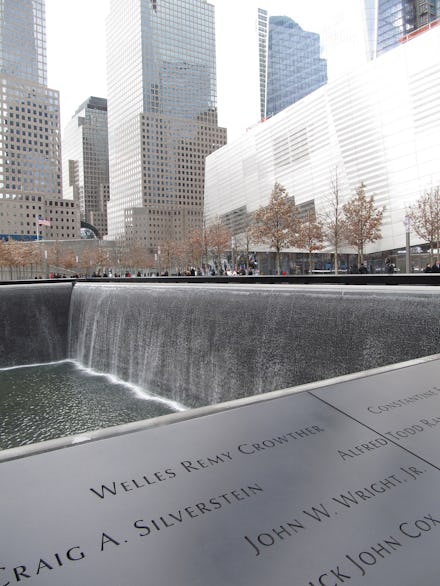How 'The Man in the Red Bandana' Sacrificed His Life for a Dozen Others on 9/11

Welles Crowther spent some of the darkest hours in American history saving the lives of strangers.
Crowther, 24 and an equities trader for Sandler O'Neill + Partners, worked on the 104th floor of the World Trade Center's south tower during 9/11. A former volunteer firefighter in his hometown of Nyack, N.Y., he was well versed in the proper way to handle an emergency. When United Airlines Flight 175 struck his building at 9:03 a.m., he promptly slipped back into the role.
"Mom, this is Welles. I want you to know that I'm OK," he said in a voicemail left for his mother, Alison, at 9:12 a.m.
Amid the smoke, chaos and debris, Crowther helped injured and disoriented office workers to safety, risking his own life in the process. Though they couldn't see much through the haze, those he saved recalled a tall figure wearing a red bandana to shield his lungs and mouth.
He had come down to the 78th-floor sky lobby, an alcove in the building with express elevators meant to speed up trips to the ground floor. In what's been described as a "strong, authoritative voice," Crowther directed survivors to the stairway and encouraged them to help others while he carried an injured woman on his back. After bringing her 15 floors down to safety, he made his way back up to help others.
One of the women he helped, Judy Rein, credits him with saving her life.
"If he hadn't come back, I wouldn't have made it," she told CNN in 2002. "People can live 100 years and not have the compassion, the wherewithal, to do what he did."
A mystery solved: Though Crowther saved at least a dozen lives that day, his identity remained unknown for some time, even to those he helped. His family — his mother Alison, his father Jefferson and his sisters Paige and Honor — did not know exactly what happened in the hour before he died.
An article in the New York Times changed that. Entitled "Fighting to Live as the Towers Died," the Times interviewed the survivors who made it down from the highest floors alive. In it, eyewitnesses described the figure with a red bandana:
A mysterious man appeared at one point, his mouth and nose covered with a red handkerchief. He was looking for a fire extinguisher. As Judy Wein recalls, he pointed to the stairs and made an announcement that saved lives: Anyone who can walk, get up and walk now. Anyone who can perhaps help others, find someone who needs help and then head down.
Alison Crowther, knowing he always carried a red bandana in his pocket, sent photographs of her son to both Young and Reins, who confirmed that Welles was indeed the man who had saved them.
"Everything we shared — all the details — led right to Welles, so it was really beautiful," Alison Crowther told CNN.
The family later learned that Welles' body had been recovered with other firefighters with the FDNY. They had been on their way back up the stairs of the South Tower with the "Jaws of Life," likely to help other survivors to safety.
Gone, but never forgotten. Crowther's selfless act of heroism became a symbol of perseverance, of courage and of hope in the aftermath of 9/11. Ten years later, ESPN devoted a segment to Crowther, a former Boston College lacrosse player:
"A young man, in his 20s, strong, emerged from the smoke and, over his nose and his mouth, he wore a red handkerchief," Obama said. "He led those survivors down the stairs to safety and carried a woman on his shoulders down 17 flights, and then he went back."
There is, of course, room for less grandiose statements of remembrance. I never met Welles, but I grew up in his small, upstate New York hometown of Nyack. My older sister knew his sister Paige, and his mother was involved in our high school's music program.
Though I was only 10 years old when the towers fell, I remember, as no doubt everyone does, exactly where I was. And I remember, in the following weeks, hearing the terrible stories of those — far away and close by — who lost their lives.
But I was always struck particularly hard by Welles' story — I still am — 13 years later. I hope it always stays with me. His symbol — the red bandana — now means something different. To those he saved, it meant that they were safe, that things would be OK. And to those that knew him — or even to those that didn't — it will always mean that, too.